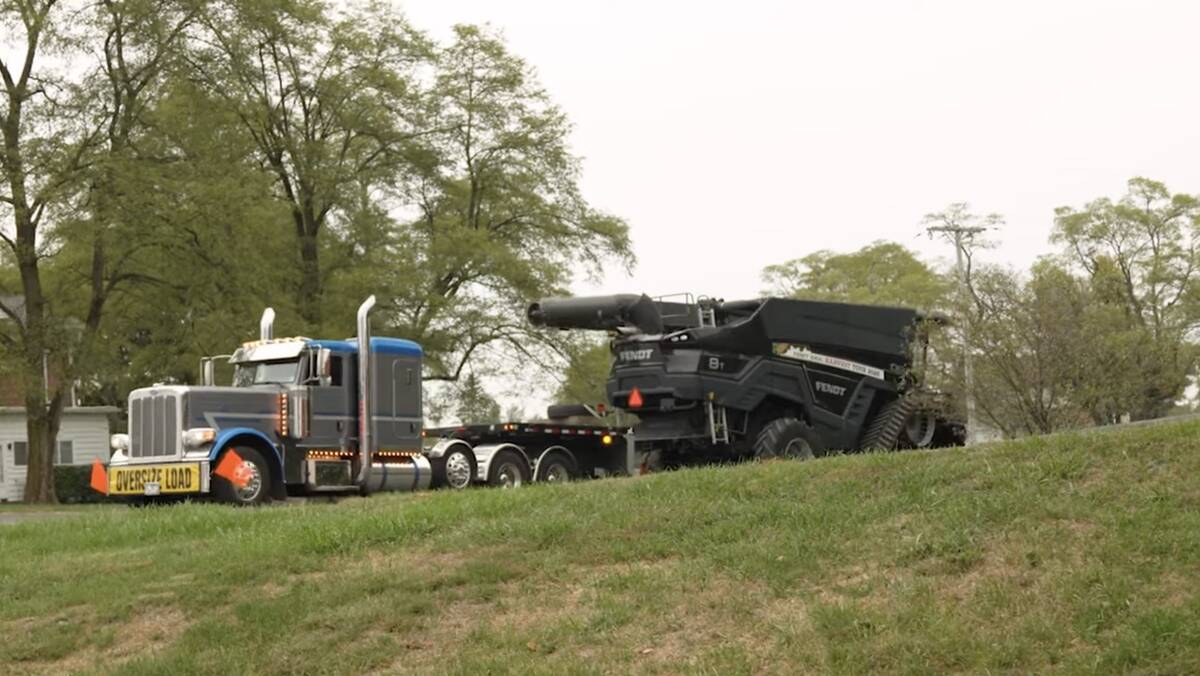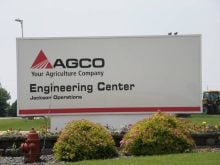WATERLOO, Iowa – Modern agriculture’s biggest engines aren’t found in the tractors expected to pull 100-foot seed drills.
Nor are they found in combines with 45 foot draper headers.
The biggest engines are found in machines that aren’t that wide, don’t generally pull a load and do only one job – cut.
Forage harvesters chew through dense material that needs to be 65 percent moisture. They are expected to fill trucks as fast as the loads can be emptied.
Read Also

Fendt takes a combine on the road in the U.S.
Putting an Ideal combine in fields across different regions has given the brand a chance to prove that the combine is capable of performing well in a variety of conditions.
John Deere has now released a new model powered by an 812 horsepower Cummins diesel.
“I don’t think a tractor really needs this much power, but a forage harvester, they need a lot of juice to get though a big crop quickly,” said Tim Meister of Deere’s Ottumwa Works.
At 812 h.p., Deere’s 7950 competes with the twin engine 830 h.p. Claas Jaguar 900 with its paired Mercedes sixes and the CNH New Holland FR9090 and its 824 h.p. Fiat V8.
Jim Branner of Cummins said the QSK19, six cylinder power plant, has a history as a mining industry engine and has proven durable under high load conditions.
Unlike the Mercedes in the Claas, which allows the operator to cut out one engine when loads are low to save fuel, the Cummins engine is idled back, while the Deere drive train handles the cutting speed adjustments.
When more power is needed, the Cummins designed modular common rail fuel system kicks in the added fuel and brings the machine back up to full operating torque quickly, said Branner.
The fuel pump feeds fuel at 23,000 pounds per sq. inch through double wall lines.
The modular system prevents an unbalanced fuel supply from reaching the cylinders, which can cause vibration and premature component wear.
The new engines’ emissions are governed by American Environmental Protection Agency Tier Three laws for off-highway engines producing more than 751 h.p. That means that even when the throttle is suddenly cracked open under load, smoke won’t pour from the exhaust stack.
Cummins reports that cylinder walls and piston spacing are thicker and wider than standard, increasing stability of the engine. Additional stiffening of the forged crankshaft helps prevent flex.
Forged cast ductile single piece pistons are each cooled by a stream of oil from high flow nozzles.
“The 7950 boasts a 17 percent power increase over the 7850 that it replaces in the Deere lineup,” Meister said.
The largest forage harvesters are in demand in dairy country in the Midwestern United States, but also in Western Canada.
Rolland Lavallee of John Deere handles forage harvester sales in Alberta.
“We are seeing demand for larger machines that will let producers get over more land in the time they have, so this is what they have been asking for. We have to do everything a little more quickly up here because of the shortness of our seasons.”
One replaces two
Lavallee said reduced labour is another issue.
“Some are looking at replacing two of their mid-sized machines with one larger one. A single experienced operator can move a lot of material through machines of this scale in a day.”
Lavallee said the built-in Harvestlab enables producers to ensure they are taking their silage properly.
“Feed doesn’t improve after harvest, so if you don’t get it off right, it isn’t going to get better. With machines like this, you can put up a lot of poor feed in a hurry, so on-the-go precision tools mean you know exactly what you’re getting and whether you should be taking it,” he said.
An upgrade to the Harvestlab goes beyond informing the producer about moisture and yield.
The Autoloc, which automatically controls cut length, with data fed by the Greenstar Two precision location and control system, ensures the silage is cut to maximize the bulk density of the silage in the pit.
The wetter the silage, the longer the cut that is acceptable. Long cuts in drier silage can result in spoilage and reheating problems because of poor packing density.
Crop type also affects this and the Autoloc compensates for that.
Wide variations in length cause variability in rations, due to their effect on digestibility.
Meister said the new system would manage that automatically in concert with the Harvestlab. Shorter cut lengths in drier crops require more power, so Meister said higher horsepower machines make the best use of the tool.
A new 10-row corn header on 30 inch spacings is available to drop the crop.
The 640B and C forage harvester headers for the machine have been beefed up to meet the needs of the 7950, said Meister.














